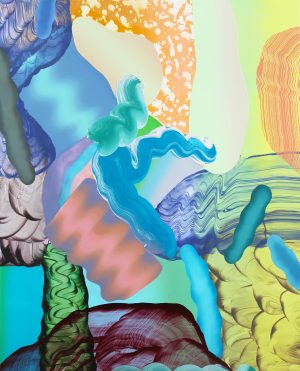
Orsolya Lia VETŐ
Liquid slices of time (13pdl)
- Year(s)
- 2021
- Technique
- acryl, oil on canvas
- Size
- 100x80 cm
Artist's introduction
The unbridled revelry of the organic energies of life. Perhaps this is the best way to describe the art of Orsolya Lia Vető, who works in Budapest. She graduated from the Hungarian University of Fine Arts, Faculty of Painting and currently she is a DLA student at the University of Pécs. Her lush, abstract canvases, inspired by motifs from nature, are based on gestures, but her compositions are constructed with a conscious precision. Besides having a degree in painting, she is also an art historian, so she can look at her own work with the awareness of a professional outsider. The exuberant canvases of Orsolya Vető are characterized by the use of strong, often lurid colors. The works pulsate with the energy of life, seeing them brings to mind motifs of nature, flora, bouquets, fruit baskets, gardens or jungles. The artist draws inspiration from her progressive modernist Rousseauian Romantic, yet Fauvist, expressionist legacy, but her paintings are characterized by the soft, organic forms and use of colors of a female artist. Although in her more recent works the artist has moved away from the recognizable classical motif of still lifes and flowers, this traditional, painterly genre is imbued with an exciting nostalgia, and gives space to the forms and colors of our time. Neon lights and pop, which can also be linked to the aesthetics of the 1960s, as well as electro-techno-digital phenomena of the 21st century are incorporated into the paintings. The gesture-based, impulsive brushstrokes, whose position, direction and color are otherwise perfectly considered, meet the smooth, often background-like, more receding spaces of the sprayed surfaces. The dynamics of the paintings are limited only by the size of the canvas, and the circular tondo works, as well as the "noodles" laid on the pedestals or in the gallery space, give the feeling that the paintings are infinite spaces. Their energy reminds us of the French philosopher Gilles Deleuze's concept of '...and and and...', which suggests that life does not really know the continuum of space and time, that life has no time and no boundaries, that the dynamic of life is the continuous movement, birth, pulsation that art embraces. Délia Vékony
More artworks in the artist's collection »

